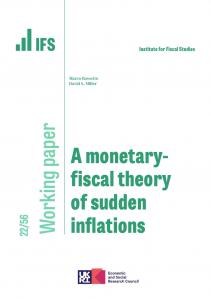Rules are there to be broken. That’s certainly been true of fiscal rules. And we’ve had a few. Twelve since 1997 in fact. Ten of those 12 have been broken or abandoned.
Few have fared as badly as the three that the Conservative government not only set itself, but legislated for, just last year. One year on, two of them have already been missed. One was designed to cap forecast welfare spending. That cap has been breached. One stated that public sector debt should fall every year. It rose last year.
The last, and most salient, said that we must be in surplus for every year from 2019-20 onwards. That rule was unceremoniously dumped in the aftermath of the Brexit vote. That, in short order, makes for a rather unimpressive hit rate of nought out of three.
Despite this, to put it kindly, chequered history Philip Hammond, the new chancellor, will in all likelihood come up with yet more rules in his first autumn statement next week. Given that they really do appear to be there only to be broken, why might he bother?
In all their different guises, fiscal rules are there to do three things. First, they provide a sense of direction and a political signal. Chancellors have an unusually free hand twice a year to set and change tax and spending policy. The electorate, the financial markets and their colleagues in parliament, need some sense of what sort of fiscal policy they are following. Without some kind of guidance, some rules or targets, there would be no basis for planning or for holding the chancellor to account. Financial markets may not worry too much about the precise details of fiscal policy but they do want to know that there is a direction.
Second, and despite the propensity to break them, rules do provide a real constraint. They can save a chancellor from himself. Having set out a rule, it is genuinely harder for a chancellor then simply to announce whatever spending increases or tax cuts he or she fancies. I saw that in action when I worked in the Treasury under Gordon Brown. His fiscal rules were flawed — they were backward looking and depended on judgments made within the Treasury. Moreover, Mr Brown gamed his own rules, but they were still constraining. I’m pretty sure we would have been running a bigger deficit before the financial crisis had there been no rules.
Third, they strengthen the chancellor’s hand in negotiations with his colleagues: “I’d love to give you more money to spend on hospitals/schools/battleships but that would bust the fiscal rule we’ve all signed up to.” That’s an easier sell than a straight “no”.
Despite the number of times they have been broken these are, in my view, still good reasons for setting some new rules. Mr Hammond should not conclude that he can do without them. What he needs to do is understand what went wrong with the previous ones.
Mr Brown’s rules were broken because the world changed, and changed dramatically. The rules were not formulated with a financial crash in mind. They served a purpose while they could. To have tried to keep to them would have been absurd. But if one is formulating some rules it is useful to set out up front the circumstances in which they will be suspended. In fact, that was one of the few sensible features of George Osborne’s most recent target — to get to budget surplus by 2019-20 — for that was explicitly hedged with the condition that it would be suspended if growth fell, or was projected to fall, below 1 per cent.
In other respects, Mr Osborne’s final set of rules were not only poorly designed but positively damaging. Even if one broadly agreed with the aim to get into surplus not too far in the future, setting a specific date simply led him to play silly games with the figures as the forecasts deteriorated. Back in March he announced additional unspecified spending cuts just a few months after carrying out a full spending review, pushing back tax revenues into 2019-20 and moving spending commitments around. That’s the problem with badly designed targets: you start off with good intentions, move to playing silly games, start announcing damaging policies and end up hurting rather than enhancing your own credibility.
The frustrating thing about Mr Osborne is that his early work was so much better. Alongside his excellent innovation in setting up the independent Office for Budget Responsibility he introduced the best-designed fiscal rule we have seen in the past two decades. His aim was to get to current budget balance five years hence. That was forward looking, flexible and allowed borrowing for investment. Its flexibility came from the fact that there was no set year in which balance had to be achieved as long as policy was set to achieve it on current forecasts. When forecasts deteriorated, as they dramatically did in the autumns of 2011 and 2012, no games had to be played, no further spending cuts had to be announced. The moment of budget balance was pushed out in a way that was economically sensible.
Given the economic uncertainties at present Mr Hammond would be well advised to learn from his predecessors’ experience. He will need to signal that he continues to take the deficit seriously. He will need to signal that, with growth prospects diminished, further spending cuts or tax increases are all but inevitable in the long run.
The idea that we have reached the end of austerity is just foolish chatter, so he should also give himself the sort of flexibility to adjust his plans as the world changes — and to borrow for investment — that Mr Osborne initially gave himself and then, unaccountably, abandoned.
This article was first published by The Times and is reproduced here with permission.
Paul Johnson is director of the Institute for Fiscal Studies. Follow him on Twitter @PJTheEconomist







